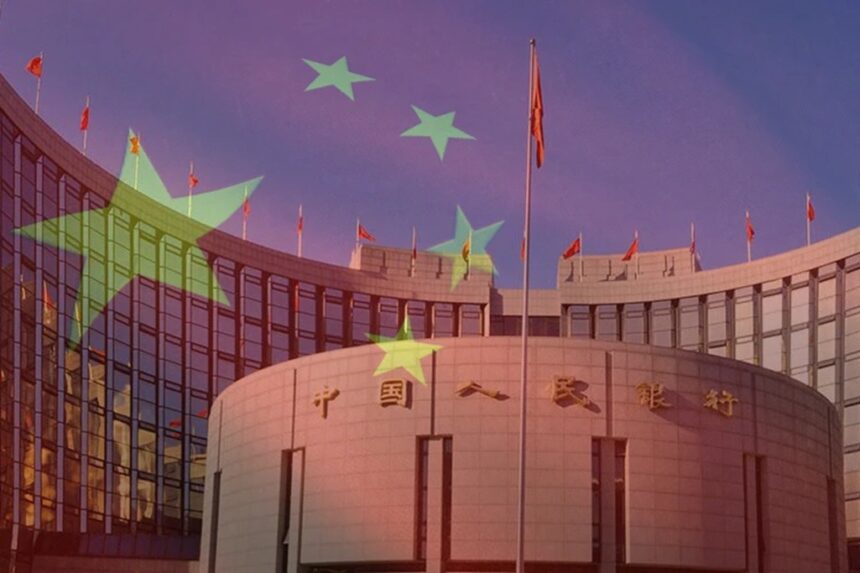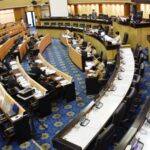BEIJING – The People’s Bank of China (PBOC) has introduced new monetary easing steps to support China’s economy, which has come under more strain as the trade conflict with the United States drags on.
With Washington imposing steep tariffs, including a 104% duty on Chinese imports, the PBOC is trying to boost spending at home and keep the economy steady. Despite these actions, China faces ongoing problems: a sluggish economy, rising capital flight, and a steady increase in personal savings, even though deposit rates have dropped several times over the past few years.
These trends have sparked concerns about the falling impact of monetary policy and its side effects, especially as households focus on saving rather than spending.
On 20 May 2025, the PBOC lowered its main lending rates by 10 basis points. The one-year loan prime rate (LPR) now stands at 3.0%, while the five-year LPR, which is key for mortgage rates, is down to 3.5%. This was the first rate reduction since October 2024.
The central bank also cut the seven-day reverse repo rate by 10 basis points to 1.40%, starting from 8 May. Big state-owned banks reduced their deposit rates as well, setting an example for smaller lenders to help cut borrowing costs throughout the economy.
The PBOC also pumped 357 billion yuan (about $50 billion) into the banking sector through reverse repos to maintain ample liquidity.
According to Citi analysts, these moves are meant to lift confidence and encourage lending ahead of important trade talks with US officials, including Treasury Secretary Scott Bessent and trade negotiator Jamieson Greer, which took place in Geneva earlier in the month.
China’s economic struggles
The timing of these steps is closely tied to the return of high US tariffs under President Donald Trump. China’s export sector, now critical as local demand weakens, faces mounting difficulty. The central bank aims to soften the blow by encouraging loans and spending, but some analysts doubt how much difference this will make.
Capital Economics points out that the problem is not with supply, but with a lack of demand for credit, suggesting that stronger government spending would help more than rate cuts.
Beijing’s economic struggles are not new and have deepened over the years, with a long property market slump and weak consumer confidence. House prices in major cities are down nearly 30% since 2021, while Chinese stock markets have lost $6 trillion in value over the past three years, hitting household wealth. As a result, people are saving at record levels.
By 2024, household deposits had reached 151 trillion yuan (about $20.8 trillion), more than double the total in 2018. Despite several rounds of deposit rate cuts — three in 2023 and more in July and October 2024 — savings growth remains strong.
In April 2024, total deposits fell by 3.9 trillion yuan as investors looked for higher returns in bonds and other products, but this did not stop households from saving more: in the first two months of 2025, savings were up by 6.13 trillion yuan.
This surge in savings shows the deep worries among Chinese consumers. Without a strong welfare system, people feel the need to build up their safety nets. According to the PBOC’s Urban Depositors Survey Report for the second quarter of 2024, over 61% of those asked planned to increase their bank savings, a sharp jump from 2021.
Lower deposit rates, meant to encourage spending, have instead made people even more cautious, as returns on savings fall. Zhiwei Zhang, chief economist at Pinpoint Asset Management, says people would spend more if they felt secure in their jobs, highlighting the link between job worries and careful spending.
Low returns have put added pressure on banks. The average net interest margin for commercial banks fell to a record low of 1.43% in the first quarter of 2025. This squeeze on profit makes it harder for banks to lend.
At the same time, with the property market in trouble and the economy uncertain, consumers prefer to save rather than spend or take on more debt. This helps keep inflation low, with prices for consumers turning negative in February 2025 and producer prices falling for 29 months in a row. Goldman Sachs expects retail inflation to stay flat for 2025, with wholesale prices likely to drop by 1.6%.
Bond Yield Gap
China is also seeing faster capital outflows as investors look for better returns abroad, especially in the US, where bond yields have beaten those in China since April 2022. The PBOC has avoided sharply lowering the yuan’s value to stop more money from leaving the country, as this could unsettle financial markets.
In April 2025, the central bank told state lenders to scale back on US dollar purchases to help steady the yuan, which has lost more than 2% since Trump’s election in November 2024. Despite these moves, the gap between US and Chinese 10-year government bond yields remains wide at 230 basis points, making overseas investment more appealing.
In December 2024, the PBOC pivoted to a “moderately loose” stance on monetary policy for the first time in 14 years, showing the urgent need to tackle these issues. Still, analysts doubt whether looser money alone will be enough. Japan’s long period of slow growth after asset bubbles burst is a reminder that cutting rates is not always enough to revive weak demand.
The Chinese government has promised fiscal action, including a 10 trillion yuan debt package to help local governments and a 2 trillion yuan bond plan, but these are aimed at stability rather than a quick boost to spending.
Experts say China needs to focus more on encouraging consumer spending. Ideas include expanding the 300 billion yuan trade-in scheme to push people to buy new goods. But the government continues to prioritize support for manufacturing and exports, especially in electric vehicles and green technology, attracting some criticism for overlooking consumer demand.
With trade tensions still high, the PBOC must walk a fine line between supporting growth and preventing financial instability or a sharp fall in the yuan’s value.
In summary, the PBOC’s recent easing steps are intended to cushion the blow from the trade dispute, but are unlikely to solve China’s deeper problems. The steady rise in household savings, despite low deposit rates and growing uncertainty, highlights the limits of monetary policy in an environment of weak consumer confidence and capital outflows. Without stronger government support and policy reform,
China faces the risk of a drawn-out period of low inflation, with consumers still focused on saving rather than spending. The direction China takes will have major implications for global markets.














